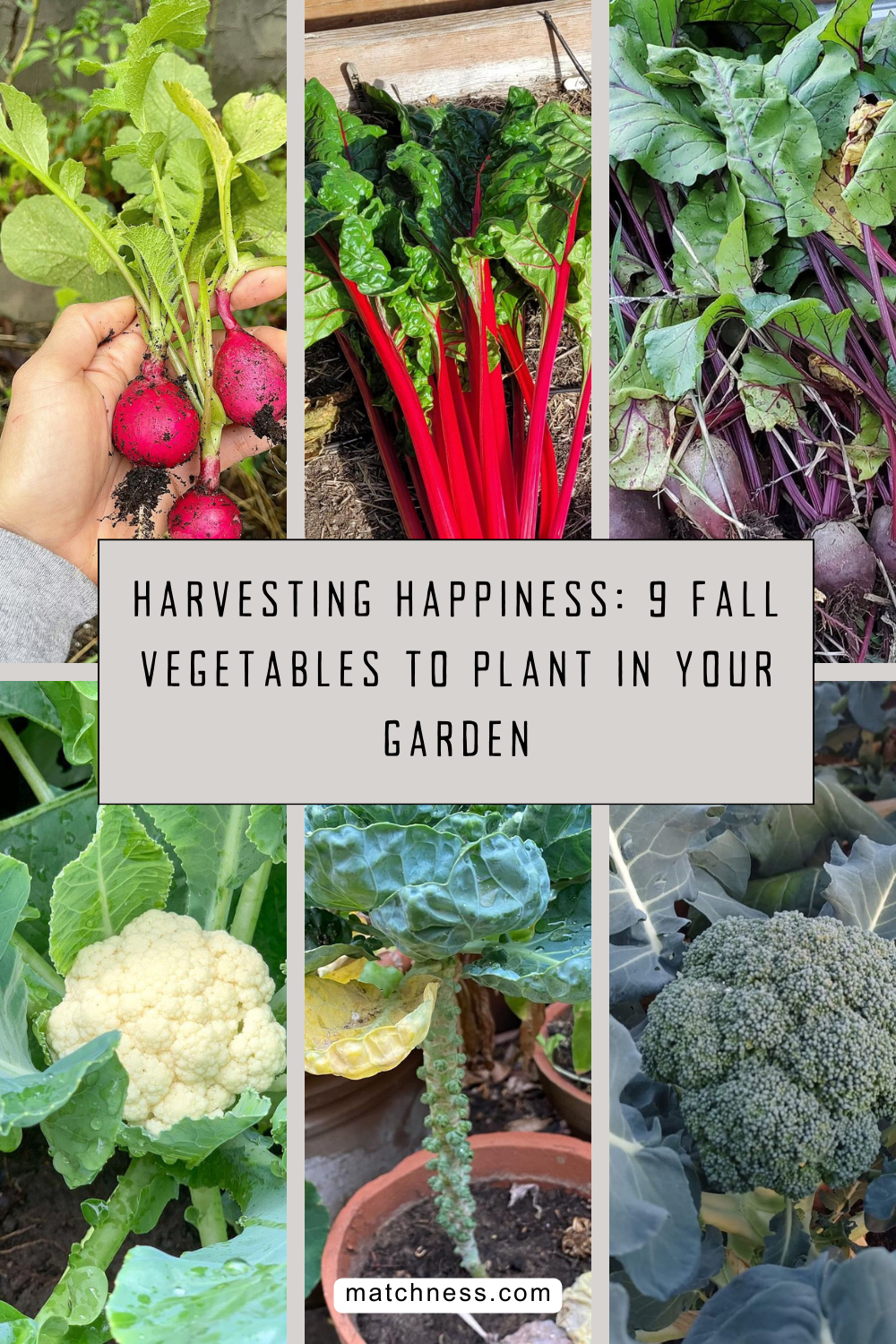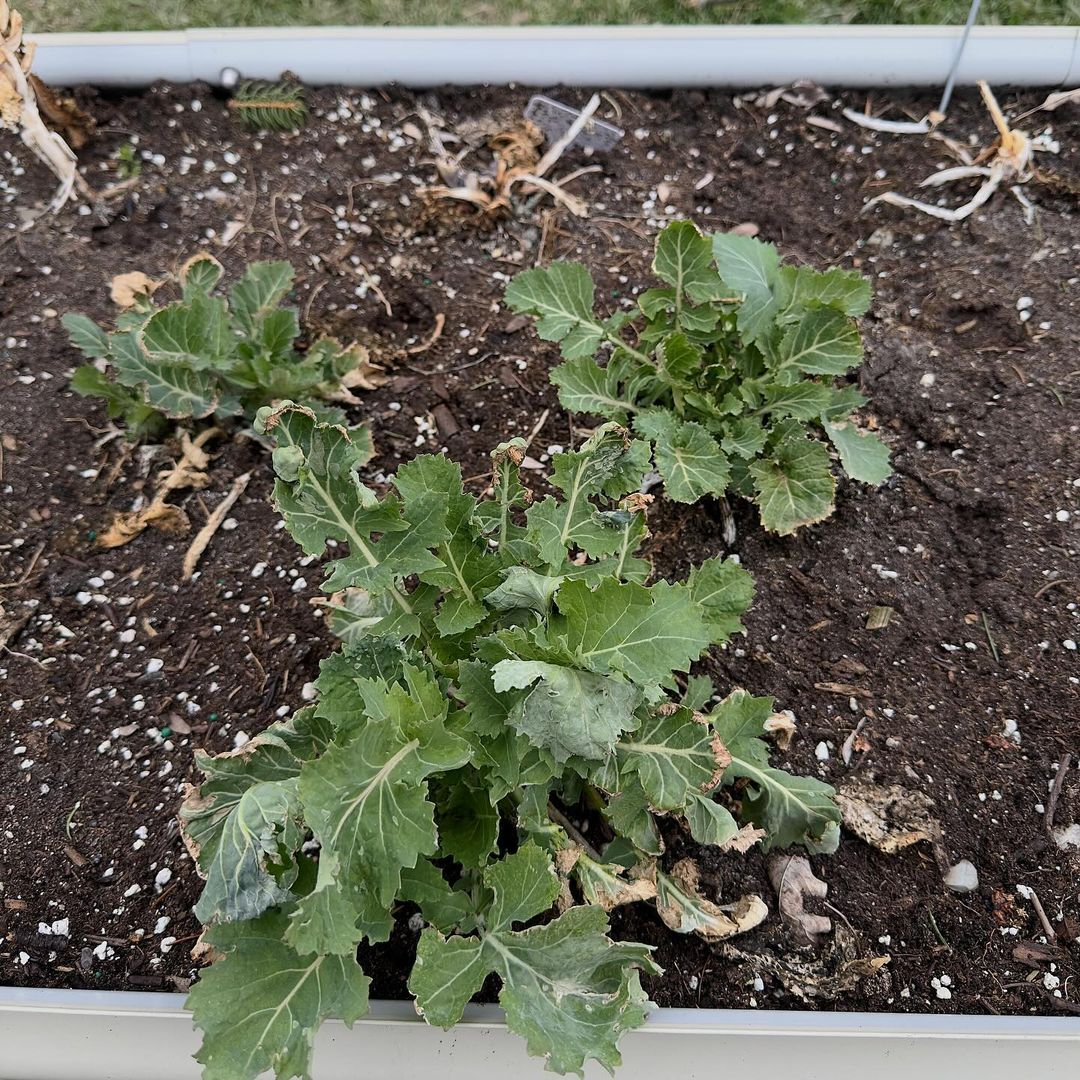Gardening has long been known to have therapeutic benefits for mental health and overall well-being. The act of nurturing plants and watching them grow can bring a sense of accomplishment and joy. It ultimately leads to an increase in happiness levels. Well, this fall, you can still do a gardening activity by planting some fall vegetables.

As the weather cools down, it’s time to start thinking about planting fall vegetables in your garden. Some great options to consider include broccoli, carrots, and kale, which thrive in cooler temperatures and can provide a bountiful harvest for you to enjoy. Don’t let the changing seasons stop you from reaping the benefits of gardening. Fall vegetables are not only delicious but also easy to grow, making it a perfect way to continue your gardening journey. So grab your gardening tools and get ready to plant some fall vegetables for a rewarding and relaxing experience.
Benefits of Fall Vegetable Gardening
- Extend the growing season and enjoy fresh produce longer into the fall months. With proper planning and care, you can continue to enjoy homegrown vegetables well into the cooler weather, providing a sense of accomplishment and satisfaction.
- Save money on groceries by growing your own vegetables and reduce your carbon footprint by sourcing food locally. Enjoy the satisfaction of knowing exactly where your food comes from and how it was grown.
- Improve mental health and well-being through gardening by spending time outdoors, connecting with nature, and engaging in a rewarding and fulfilling hobby. Gardening has been shown to reduce stress, anxiety, and depression, promoting overall mental wellness.
- Fall vegetables are typically easier to grow and require less maintenance than summer crops. It makes them a great option for beginner gardeners looking to harvest happiness through gardening.
- Fewer pests and diseases to contend with. During the fall season, your vegetables will be healthier and more robust, leading to a bountiful harvest. Additionally, with fewer pests and diseases, you can spend less time and money on pest control measures.
Tips for Successful Fall Vegetable Gardening
- Choose the right location with plenty of sunlight. It’s important to make sure your fall vegetables receive at least 6-8 hours of sunlight each day to thrive.
- Prepare the soil by adding compost and fertilizer. It will make sure your plants have the nutrients they need to grow strong and healthy.
- Keep an eye on the weather and be prepared to protect your plants from early frosts by covering them with a row cover or bringing them indoors if necessary.
- Be sure to water consistently, as fall vegetables still need hydration even as the weather cools down. Proper watering will help prevent stress and disease in your plants.
Fall Vegetables to Plant in Your Garden
Leafy Greens
Spinach
Spinach is one of the leafy green vegetables that you can plant in the fall season. This versatile vegetable is packed with nutrients like iron, vitamin C, and antioxidants. It makes it a great addition to your garden for a healthy harvest. In this cold weather, spinach thrives and produces sweeter leaves with a more robust flavor compared to when grown in warmer temperatures. The cooler temperatures also help prevent the plant from bolting. It will ensure a longer harvest period for fresh spinach throughout the fall season.

Spinach can grow well in the fall when planted in well-draining soil and given adequate sunlight. It is a cold-hardy vegetable that can withstand light frosts, making it an ideal choice for autumn gardening. Spinach from @growingyourgreens
Kale
Another leafy green vegetable that you can plant this fall is kale. This is a cold-hardy vegetable that becomes sweeter after exposure to frost. It makes it a delicious addition to your autumn garden. Like spinach, kale is packed with nutrients and can be harvested multiple times for a continuous supply of fresh greens. Furthermore, kale is a versatile vegetable that can be used in salads, soups, smoothies, and more. Its rich flavor and hearty texture make it a popular choice for fall and winter cooking.

To have a vegetable garden this fall, you can plant kale for fall vegetable options. You can plant it directly in the ground or in containers if you have limited space. Kale is a hardy plant that thrives in cooler temperatures, making it perfect for autumn harvests. Kale from @indianagardener
Swiss chard
Next, Swiss chard is another great leafy green option for your fall garden. Swiss chard is known for its colorful stems and mild flavor. This is a versatile ingredient in various dishes. Swiss chard is easy to grow and can be harvested multiple times throughout the season. In addition to being a great source of vitamins and minerals, Swiss chard is also known for its high antioxidant content. Making it a nutritious addition to any meal. Whether sautéed, steamed, or added raw to salads, Swiss chard is a delicious and healthy option for your fall garden.

Planting Swiss chard during the fall allows for a longer growing season due to cooler temperatures and less chance of bolting. With the red and green varieties available, Swiss chard adds a pop of color to any garden while providing a nutrient-rich addition to meals. Swiss chard from @shorewoodmanor
Root Vegetables
Carrots
Carrots are easy to grow and can be planted in the fall for a sweet harvest. These are a versatile vegetable that can be enjoyed raw, cooked, or juiced for a healthy snack. Carrots thrive in well-drained soil and full sun. They also require regular watering to thrive. This fall, consider planting a variety of carrots to enjoy different flavors and colors in your harvest.

Opt for carrots for your fall vegetable garden, as they are easy to grow and can withstand cooler temperatures. It makes them a perfect choice for extending your harvest well into the autumn months. Carrots from @kuae_grows
Beets
In addition to carrots, beets are another root vegetable that you can plant in your fall garden. Beets are easy to grow and can be harvested when they are young for a sweeter flavor. They also come in a variety of colors, adding visual interest to your garden. Beets are also packed with nutrients, including fiber, folate, and potassium. They can be enjoyed raw in salads or cooked in a variety of your fall dishes.

If you choose to plant beets in your fall garden, make sure to plant them in well-draining soil and provide consistent watering to ensure they develop properly. Beets are a cool-season crop that can withstand light frosts, making them an excellent choice for fall planting. Beets from @mayberryhomesteadllc
Radishes
Radishes are also root vegetables that grow well this fall. You can plant this vegetable in your garden. Radishes are known for their quick growth, with some varieties ready to harvest in as little as three weeks. Well, this fall, you can enjoy the crisp and peppery flavor of freshly harvested radishes in salads, sandwiches, or as a crunchy snack. They are a great addition to any fall garden and can be planted in containers or directly in the ground.

Radishes are a great root vegetable option to plant in the fall vegetable garden. They are quick to mature, usually ready to harvest in just a few weeks. Radishes are also low-maintenance and can be grown in containers for those with limited garden space. Radishes from @carrieschwarbs
Cruciferous Vegetables
Broccoli
Broccoli is known for its high nutritional value, being rich in vitamins, minerals, and antioxidants. It is also a versatile vegetable that can be enjoyed raw or cooked in various dishes. During the fall season, broccoli can be a fall vegetable option to plant. Broccoli thrives in cooler temperatures and can be planted in late summer for a fall harvest. Its resistance to frost makes it an ideal choice for autumn gardening. You can take the benefits by plating broccoli this fall. For example, planting broccoli in the fall can provide you with a fresh and nutritious harvest before the winter months. Additionally, growing your own broccoli allows you to control the use of pesticides and ensure that you are consuming a healthy and organic product.

Planting broccoli will make your fall vegetable garden more diverse and provide you with a nutrient-rich vegetable to enjoy throughout the season. Additionally, broccoli is a cool-season crop that thrives in cooler temperatures, making it an ideal choice for fall planting. Broccoli from @clover_hilltop_farm
Cauliflower
Cauliflowers have a shape like broccoli but are white in color and have a slightly milder flavor. They are also a great fall vegetable option to plant, as they can be harvested in the cooler months. Like broccoli, cauliflower is resistant to frost and can be grown organically for a healthy and delicious addition to your fall harvest. Incorporating cauliflowers into your fall garden can help you maintain a healthy lifestyle while enjoying the satisfaction of growing your own food.

Cauliflower can be another fall vegetable option to plant. You can plant it on the raised bed or in containers for easy maintenance and harvesting. Cauliflower from @gardeninghobbyist
Brussels sprouts
Furthermore, Brussels sprouts are another excellent option for fall planting, as they thrive in cooler weather and can be harvested well into the winter months. Brussels sprouts are packed with vitamins and minerals, making them a healthy addition to your diet. They are also versatile vegetables that can be roasted, sautéed, or even added to salads for a delicious and nutritious meal. Whether you’re a seasoned gardener or just starting out, Brussels sprouts are a great choice for your fall garden.

Brussels sprouts harvested in the fall months are typically sweeter and more tender due to cooler temperatures promoting their growth. This makes them a popular choice for seasonal dishes and holiday meals. Brussels sprouts from @lazyroofgardener
By planting these fall vegetables in your garden, you can enjoy a bountiful harvest and delicious meals throughout the season. So roll up your sleeves, get your hands dirty, and start planting these delicious and nutritious crops in your garden today!




















